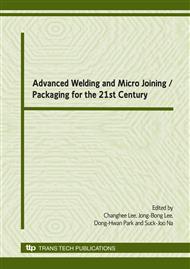p.1
p.5
p.9
p.13
p.17
p.21
p.25
Effect of Hydrogen Concentration at Overlay / Base Metal Interface on Repair Weldability of Petroleum Pressure Vessel
Abstract:
In order to extend the life of petroleum pressure vessels operated in long term, it is demanded to establish the repair welding technique. To make clear the effect of weld thermal cycles during repair welding on the hydrogen content and weld cold cracking at the base metal of 2.25Cr- 1Mo steel / overlaying metal of austenitic stainless steels interface in the structural material of petroleum pressure vessels, the crack susceptibility was estimated by y-groove weld cracking test and repair welding test with varying overlay thickness and hydrogen exposure conditions. In addition, the hydrogen distribution in the material was calculated by the theoretical analysis using the diffusion equation based on activity. The crack susceptibility was raised with increase in the hydrogen content at the interface. It was concluded that the cracking could be prevented by controlling the repair welding process to reduce the hydrogen content at the interface.
Info:
Periodical:
Pages:
5-8
Citation:
Online since:
June 2008
Authors:
Price:
Сopyright:
© 2008 Trans Tech Publications Ltd. All Rights Reserved
Share:
Citation:


